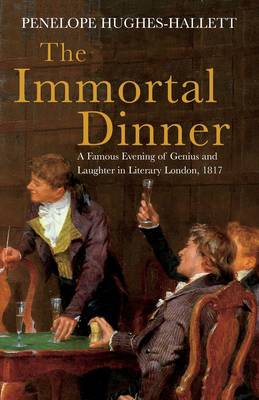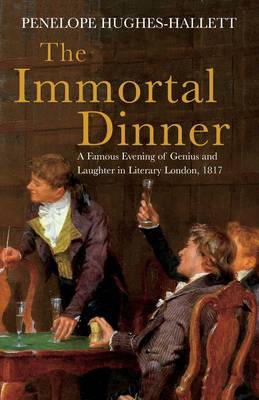
- Afhalen na 1 uur in een winkel met voorraad
- Gratis thuislevering in België vanaf € 30
- Ruim aanbod met 7 miljoen producten
- Afhalen na 1 uur in een winkel met voorraad
- Gratis thuislevering in België vanaf € 30
- Ruim aanbod met 7 miljoen producten
Zoeken
The Immortal Dinner
A Famous Evening of Genius and Laughter in Literary London, 1817
Penelope Hughes-Hallett
Paperback | Engels
€ 36,95
+ 73 punten
Uitvoering
Omschrijving
On December 28, 1817, the eccentric painter B.R. Haydon gave a famous dinner party in his painting room in London. He invited, among others, three of the greatest literary lights of the age: John Keats, William Wordsworth, and Charles Lamb. The Immortal Dinner offers a glimpse into the lives and thoughts of this literary elite at a turning point in English society. "Fascinating...Hughes-Hallet discourses on the characters and histories not only of the guests themselves but of numerous of their contemporaries not present that evening."-Evelyn Toynton, New York Times Book Review.
Specificaties
Betrokkenen
- Auteur(s):
- Uitgeverij:
Inhoud
- Aantal bladzijden:
- 368
- Taal:
- Engels
Eigenschappen
- Productcode (EAN):
- 9781493076536
- Verschijningsdatum:
- 1/10/2023
- Uitvoering:
- Paperback
- Formaat:
- Trade paperback (VS)
- Afmetingen:
- 139 mm x 217 mm
- Gewicht:
- 494 g

Alleen bij Standaard Boekhandel
+ 73 punten op je klantenkaart van Standaard Boekhandel
Beoordelingen
We publiceren alleen reviews die voldoen aan de voorwaarden voor reviews. Bekijk onze voorwaarden voor reviews.








